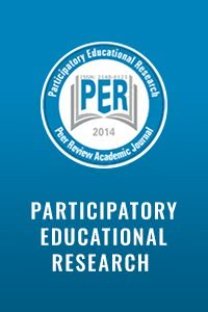Menşure A KÜÇÜKAYDIN, Çiğdem AKKANAT, Büşra BAKİOĞLU, Şafak ULUÇINAR SAĞIR, Murat GÖKDERE, Orhan KARAMUSTAFAOĞLU
Effectiveness of the Nature of Science Activities Developed for 5th Grades
Within the context of new findings about nature of science, literature has been reviewed and it was seen that the activities to develop nature of science understanding were not adequate. For this reason, new activities were developed as a part of 5th grade ‘Matter and Change’ unit and their effectiveness was tested. The research was conducted with 5th grade students from two classrooms, who were attending to a middle school in a village of city of Tokat. Activities developed about the unit; ‘Thermoscope to Thermometer’, ‘Bingo Game’ and ‘Science Wheel’ activity from the literature were applied to experimental group with textbook content, as for control group the nature of science concepts were integrated with textbook content. VNOS-E questionnaire was conducted both for pretest and posttest to experimental and control group, the questionnaires were coded by three researchers and the coefficient of consistency was calculated as 0,78. Results indicated that, experimental group’s view of nature of science in all dimensions was changed in a positive way, a significant difference was found between the posttests of two groups in experimental group’s favor. The activities were effective in developing students’ views about the nature of science. The regular curriculum was not effective in nurturing nature of science views as a consequence because the theoretical basis regarding the nature of science in the renewed science curriculum is not supported with appropriate activities, methods and classroom resources. As a result, essential and applicable suggestions were made for those who concerned.
___
- Abd-El-Khalick, F. & Lederman, N. (2000).Improving science teachers’ conceptions of nature of science: A critical review of the literature. International Journal of Science Education, 22(7), 665-701.
- Akerson, V.L.& Donnelly, L.A. (2010). Teaching nature of science to K-2 students: What understandings can they attain? International Journal of Science Education, 32, 97– 124.
- Akerson, V.L.,Weiland, I.S., Pongsanon, K., & Nargund-Joshi, V. (2011). Evidence based strategies for teaching nature of science to young children. Journal of Kırşehir Education, 11(4),61–78.
- Akerson, V.,Nargund-Joshi, V., Weiland, I., Pongsanon, K. & Avsar, B. (2013). What thirdgrade students of differing ability levels learn about nature of science after a year of instruction. International Journal of Science Education, 1-33.
- Altındağ, C., Tunç Şahin, C. & Saka, Y. (2012). A sample activity for teaching the nature of science. Journal of Inquiry Based Activities (JIBA), 2(1), 1-9.
- Büyüköztürk, Ş. (2012) .Sosyal bilimler için veri analizi el kitabi: İstatistik, araştirma deseni, SPSS uygulamaları ve yorum (16. Baskı). Pegem Akademi, Ankara. [Handbook of data analysis for social sciences: Statistics, research design, SPSS practice and interpretation (16. Edition). Pegem Academy, Ankara]
- Can, B. & Şahin- Pekmez, E. (2010). The effects of the nature of science activities on the development of seventh grade students’ science process skills. Pamukkale University Journal of Education, 27, 113-123.
- Doğan, N., Çakıroğlu, J. ,Bilican, K. & Çavuş, S. (2012). Bilimin doğasi ve öğretimi. Pegem Akademi, Ankara [Nature of science and teaching: Pegem Academy, Ankara].
- Doğar, Ç. & Başıbüyük, A. (2005).The understanding levels on weather and climate concepts for primary and secondary students. Kastamonu Education Journal, 13(2), 347-358.
- Erenoğlu, C.(2010). The effects of teaching science in nature on 5th grade students understanding of the nature of science. Unpublished Master Thesis, Ege University Institute of Social Sciences, İzmir.
- Fowler, S.R., Zeidler, D.L. & Sadler, T.D. (2009). Moral sensitivity in the contex socio scientific issues in high school science students. International Journal of Science Education, 279-29.
- Henriques, L. (2000). Children's misconceptions about weather: a review of the literature. The Annual Meeting of the National Association of Research in Science Teaching, http://www.csulb.edu/~lhenriqu/NARST2000.htm.
- Laugksch, R. (2000). Scientific literacy: A conceptual overview. Science Education, 84 (1), 71–94.
- Lederman, J. S. & Ko, E. K. (2004). Views of nature of science, form e. Unpublished Paper, Illinois Institute of Technology, Chicago.
- Lederman, N. G.,Abd-El-Khalick, F., Bell, R. L., and Schwartz, R. S. (2002). Views of nature of science questionnaire: Toward valid and meaningful assessment of learners’ conceptions of nature of science. Journal of Research in Science Teaching, 39 (6),497-521.
- McComas, W.F.,Clough, M.P., &Almazroa, H. (2002). The role and character of the nature of science in science education. In W.F. McComas (Ed.), The Nature of Science in Science Education: Rationale Sand Strategies (pp.3-39). Dordrecht, The Netherlands: Kluwer Academic Publishers
- Pallant, J. (2005). SPSS survival manual (second edition).Sydney: Allen& Unwin.
- Seçkin, M.(2013). Finding out the views of 8th grade students about the nature of science. Journal of Education and Humanities: Theory and Practice, 4(7), 27-52.
- Taşar, M. F. (2003). Teaching history and the nature of science in science teacher education programs. Pamukkale University Journal of Education, 13(1), 30-42.
- ISSN: 2148-6123
- Yayın Aralığı: Yılda 6 Sayı
- Başlangıç: 2014
- Yayıncı: Özgen KORKMAZ
Sayıdaki Diğer Makaleler
Ümmü Gülsüm DURUKAN, Ayşegül SAĞLAM-ARSLAN
Menşure A KÜÇÜKAYDIN, Çiğdem AKKANAT, Büşra BAKİOĞLU, Şafak ULUÇINAR SAĞIR, Murat GÖKDERE, Orhan KARAMUSTAFAOĞLU
Niyazi GÜNDOĞMUŞ, Şemseddin GÜNDÜZ
Sırrı AKBABA, Adem PEKER, Yüksel EROĞLU, Erkan YAMAN
